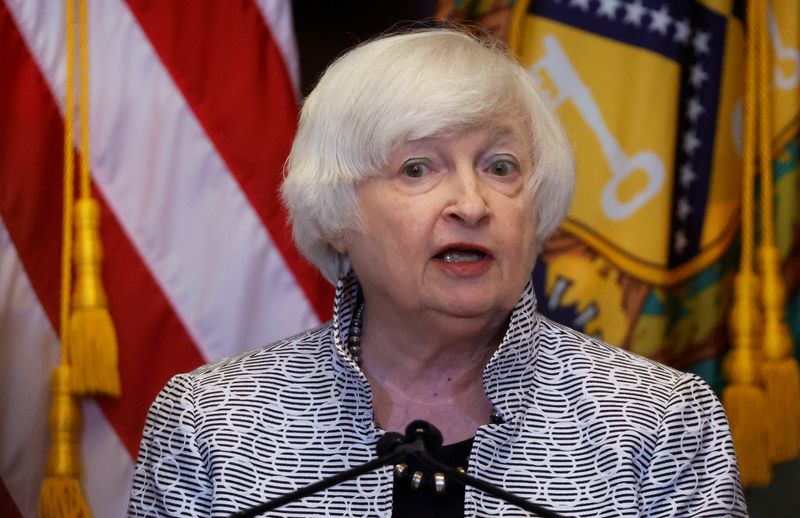
© Reuters. FILE PHOTO: U.S. Treasury Secretary Janet Yellen holds a news conference in the Cash Room at the U.S. Treasury Department in Washington, U.S. July 28, 2022. REUTERS/Jonathan Ernst/File Photo
By David Lawder
NEW DELHI (Reuters) -U.S. Treasury Secretary Janet Yellen told Reuters on Friday that it was good to see the latest U.S. inflation data that suggests upward pressures are easing, but added that it was unclear if inflation has a reached a turning point to continue moving lower.
“I don’t know if this is a turning point,” Yellen said in an interview in New Delhi a day after October U.S. Consumer Price Index data logged its smallest gain since January at a 7.7% annual rate.
“I never make more of one data point. That is one data point,” Yellen said of the Commerce Department report.
“It was certainly nice to see an inflation report that came in on the low side of expectations rather than the high side and, you know, we’ve seen early indications along the pipeline that inflation might be diminishing,” she added.
The U.S. inflation data showed that core inflation, which strips out volatile food and energy prices, rose 0.3% during October. This was a slowdown from the prior month despite stronger gains in rent costs including soaring mortgage rates.
“The core was a lot lower than had been anticipated. And that’s in spite of the fact that we continue to get high readings on shelter,” she told reporters later.
She said that while rental prices had stabilized, they would continue to put upward pressure on core inflation for some time because of the stock of older rental contracts that are coming up for renewal in a broadly more expensive environment.
Easing of supply chain problems fed through to lower core inflation, but Yellen said she would “not to read too much into one month.”
Yellen in May acknowledged she was wrong about the path inflation would take last year when she was still predicting it would be “transitory” and subside once pandemic strains had eased in the economy. Instead, supply chain problems persisted amid strong demand, a resurgent COVID-19 virus and war in Ukraine that drove up energy and food prices.
Source: Investing.com




























